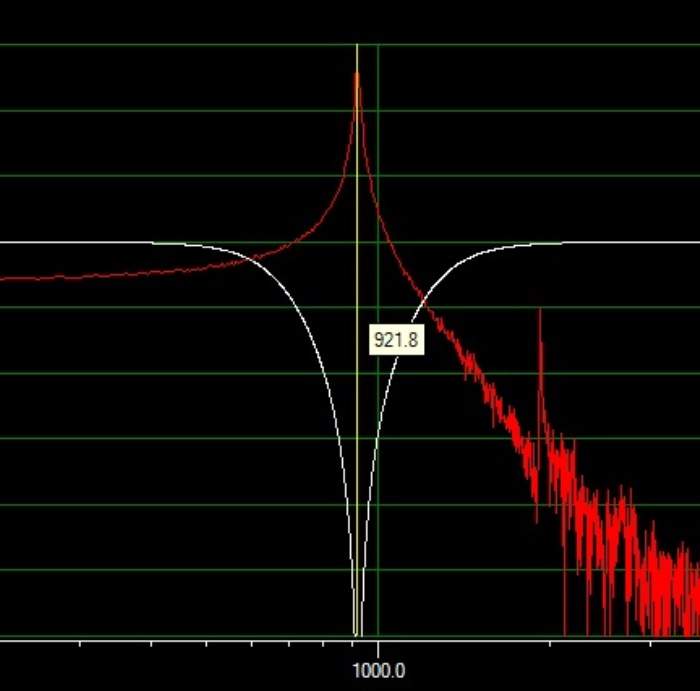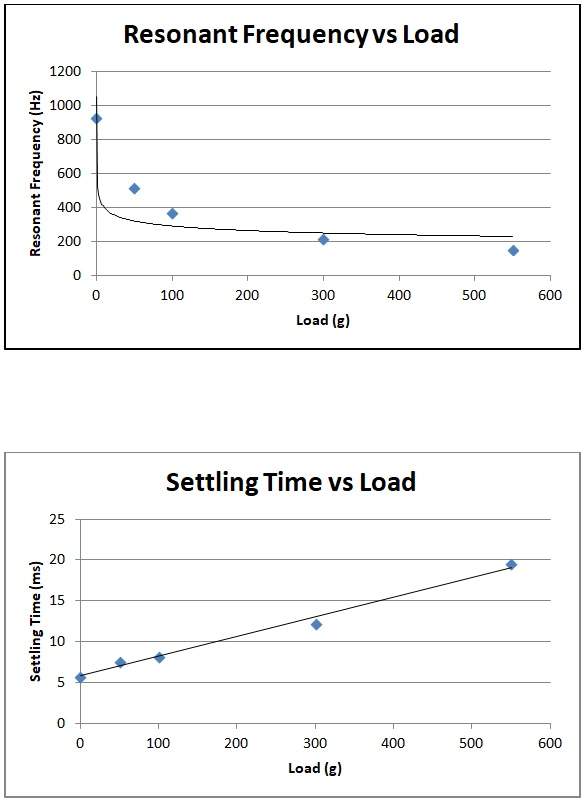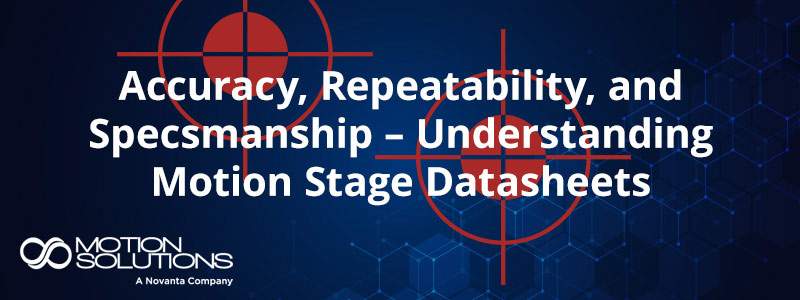To maximize the capabilities of piezo stages, it is important to understand how different factors contribute to the performance of the system. For many applications, the resonant frequency and settling time of a stage are of primary interest.
In this blogpost we explore how the resonant frequency and settling time are affected by the load we mount on a stage. We are mainly concerned with the lowest resonance of the system. The settling time is defined as the time it takes for a piezo stage to move to a commanded position and settle to within 2% of the step size (e.g., 20nm for a 1µm step).
In general, the higher the resonant frequency of a system, the higher the stability and the wider working bandwidth the system will have. As the load increases we expect the resonant frequency to decrease and thus the settling time to increase. The settling time is also greatly affected by the control settings we choose. With this in mind, to be consistent at each load, the bandwidth was maintained at ¼ of the resonant frequency, while the control gains and notch filters were adjusted accordingly.
It should be noted that by adjusting the control parameters a higher bandwidth and a lower settling time can be achieved. It is possible to scan up to 1/3 or even 1/2 of the resonance frequency of the stage. For more information go to Resonance Frequency of a Piezo Flexure Stage.
The data was collected using an nPX100 with loads of 0g, 50g, 100g, 300g, and 550g. A 1um step was executed and the results were recorded. We present screenshots of the nPControl GUI only for the 0g case. The same procedure was followed for all loads.
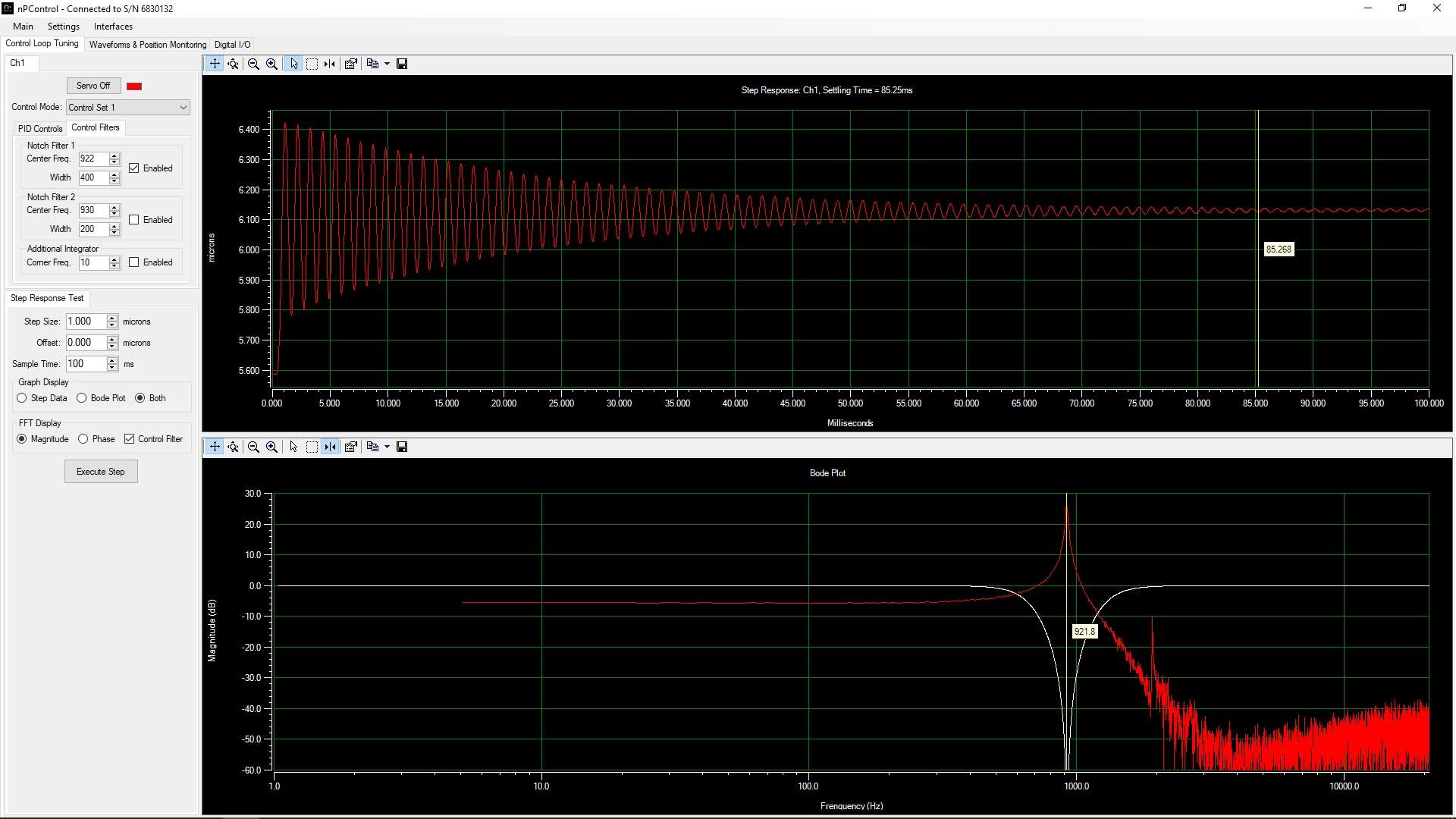
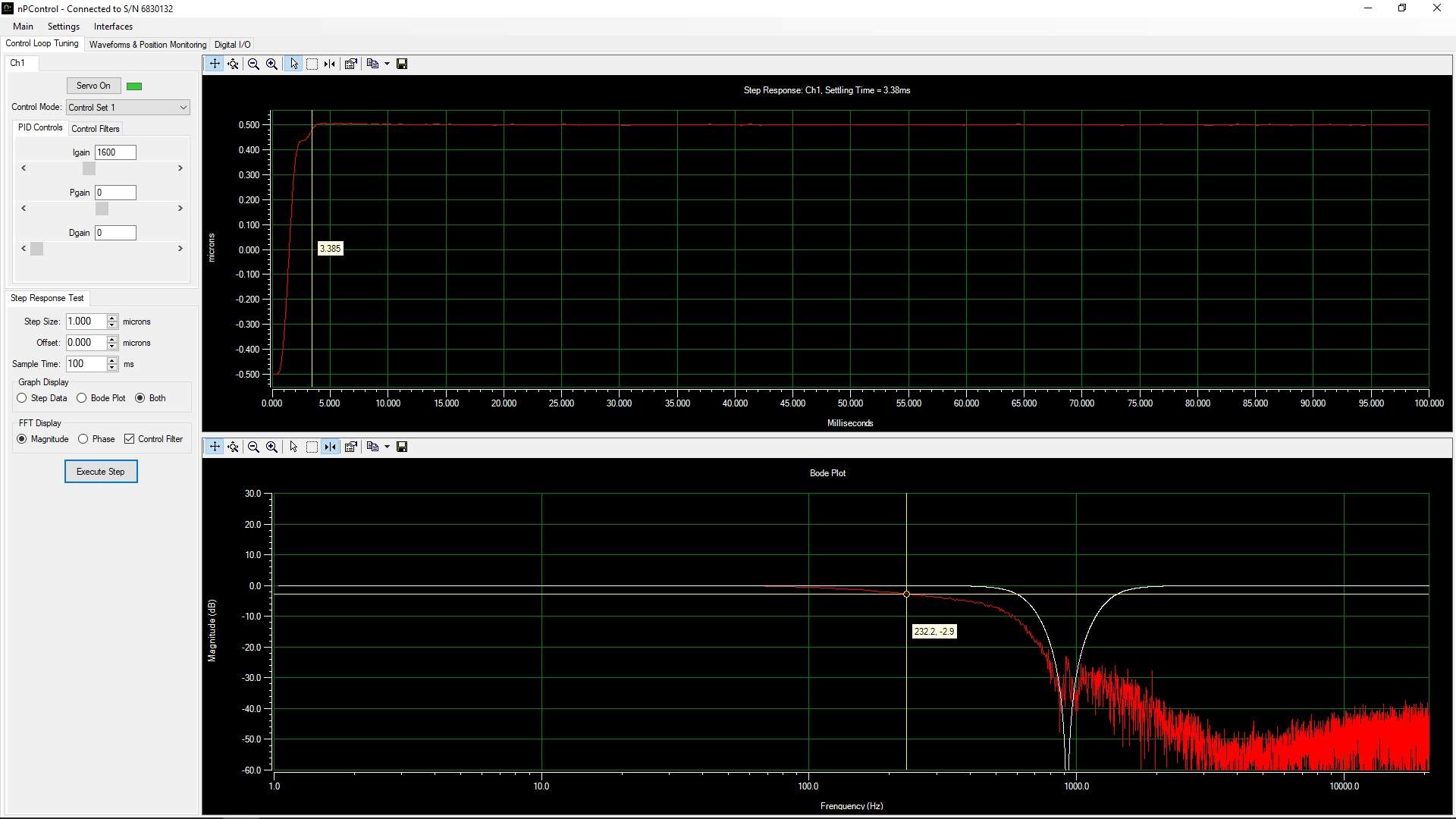
The resonant frequency of an unloaded nPX100 is approximately 922Hz as displayed in the Bode plot in Figure 1. By adjusting the I-gains and notch filters to set the bandwidth at ¼ of the resonant frequency, the settling time was measured to be 3.4ms, as shown in Figure 2.
Following the same procedure, the resonant frequency and settling time are recorded as a function of load. As expected, the resonant frequency is reduced and the settling time is increased.
The table and graphs below contain the data from the varying loads:

